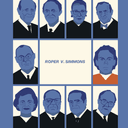The (Staunton, VA) News Leader
October 15, 2004
Editorial
One of the most important things the U.S. Supreme Court will do during this year’s session will be whether the justices rule that imposing the death penalty for crimes committed by a person under the age of 18 violates the Constitution’s ban on cruel and unusual punishment.
We hope they decide it does — and we are not alone.
Before the usual suspects begin picking up their stones chiseled with the letter “L,” we would remind them that literally hundreds of national and international scientific, religious, child advocacy, legal and other communities — cutting across the political spectrum — have filed friend of the court briefs with the Supreme Court and American Bar Association stating their opposition to the juvenile death penalty (and their reasons why) in no uncertain terms. We invite our readers to use the link we have provided to read more deeply on these issues.
This isn’t a matter that can be swept under the rug or dealt with via a two or three-word campaign slogan. While there are juvenile offenders who deeply deserve serious punishments for their crimes, the death penalty should not be among them.
Children — even if they might look like adults — don’t have brains that work the same way adult brains do. They are more easily swayed by peer pressure, and if, as often happens, a young criminal suffers from psychological and emotional disturbances, the depths of those disturbances can be much worse than what they would be if they were experienced by an adult.
No matter how heinous a crime a child might commit, killing a child in order to exact retribution is wrong. Adults must set the tone for the society our children will grow up in. One of the ways that can be accomplished is by showing them how that society can be both just and merciful. Who knows? Perhaps by not responding to violence with violence, we may be able to achieve a safer and certainly more sane world, at least here in America.
The (Staunton, VA) News Leader

